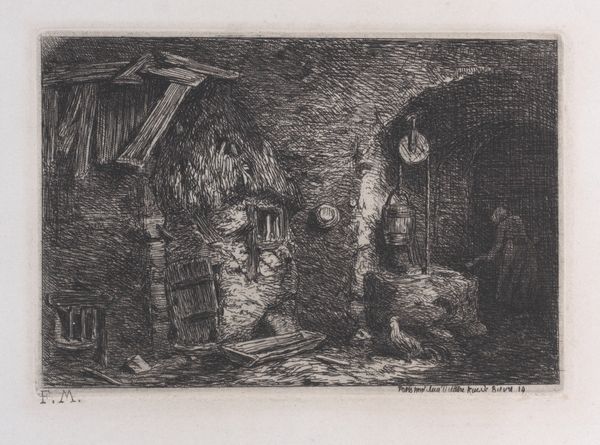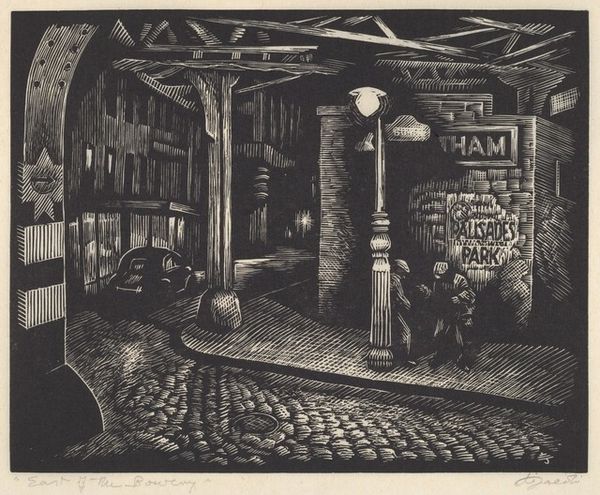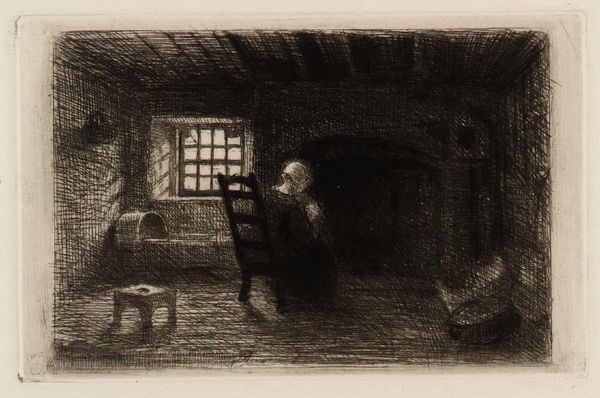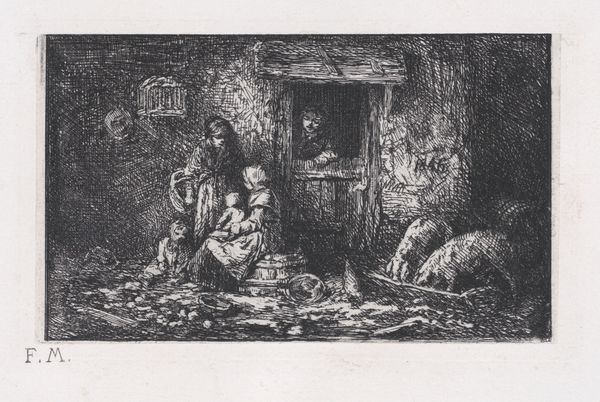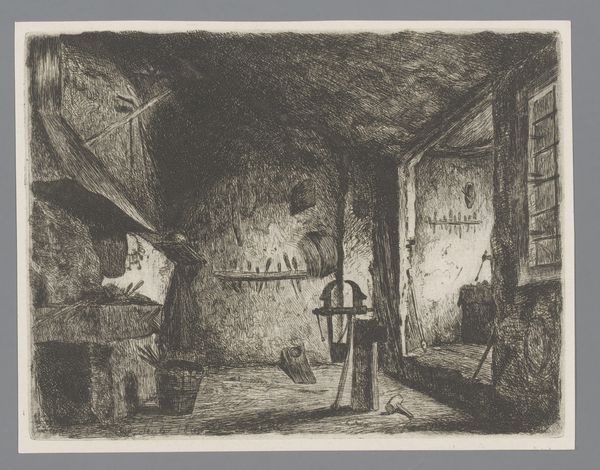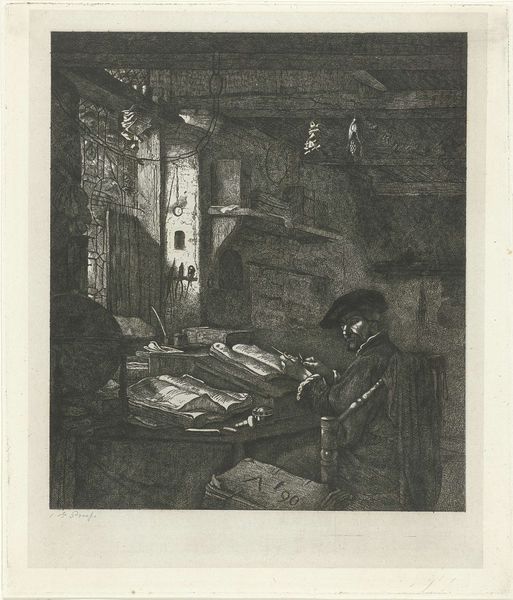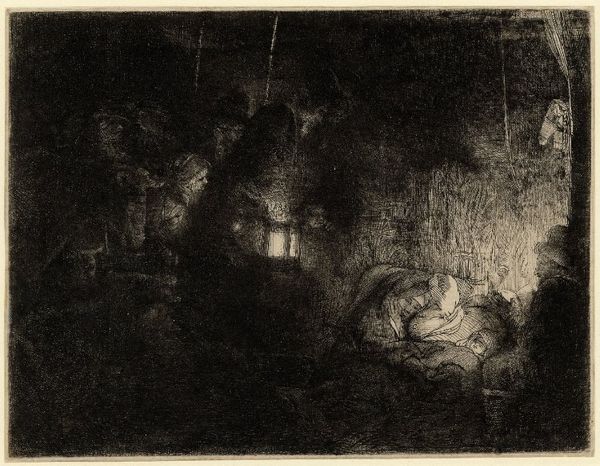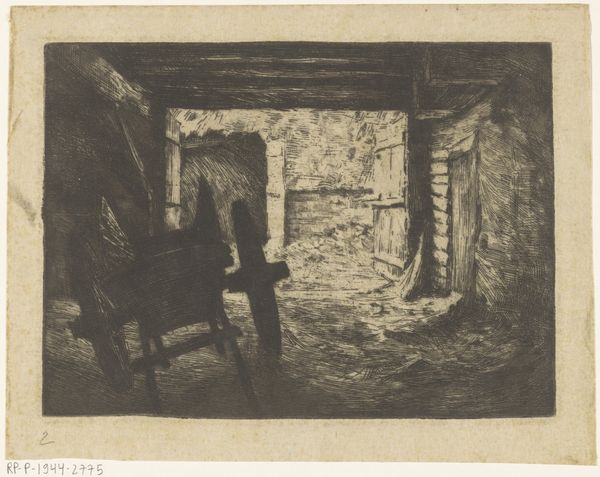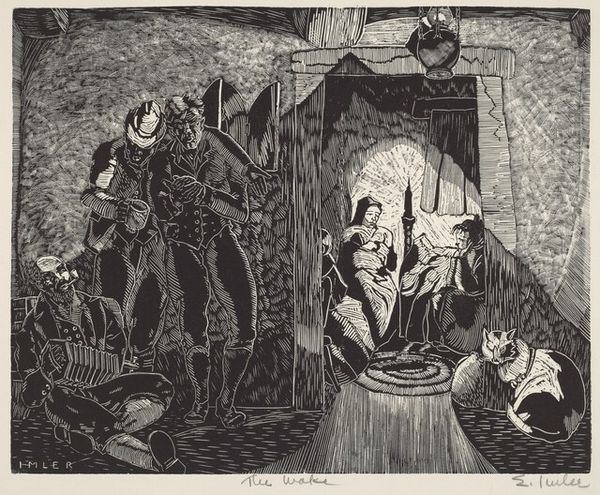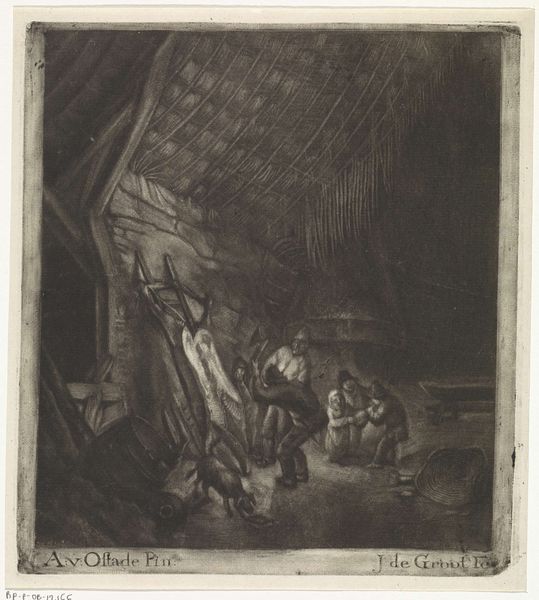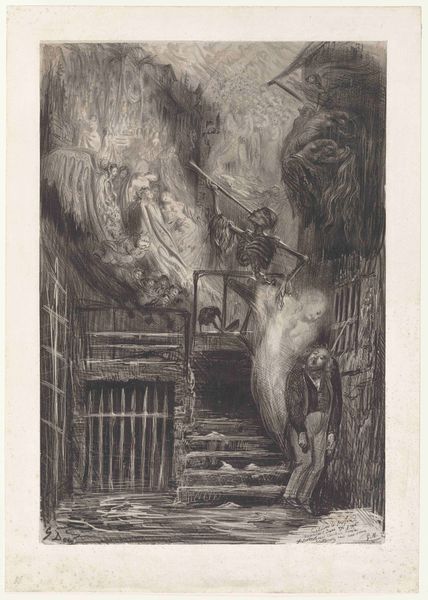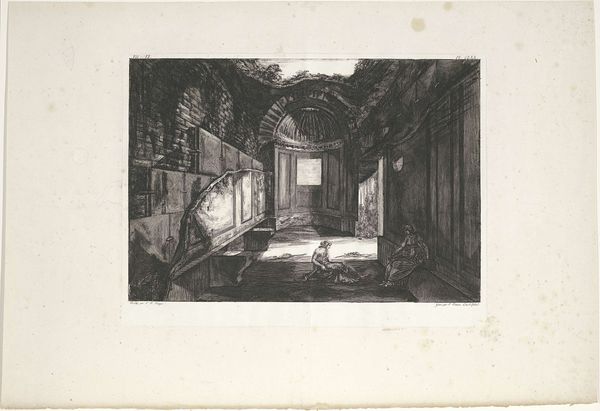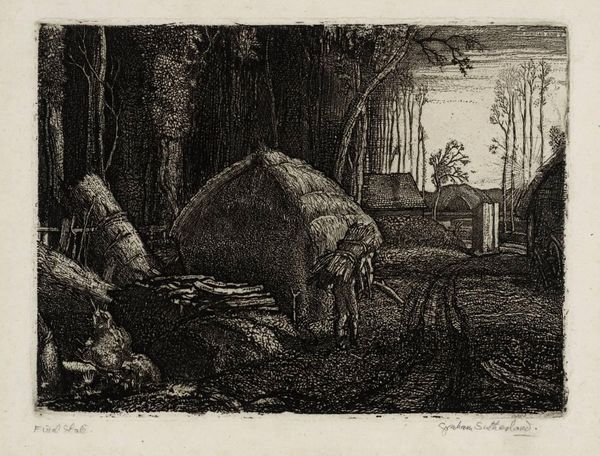
drawing, print, etching, paper
#
drawing
# print
#
etching
#
landscape
#
paper
#
genre-painting
#
realism
Dimensions: 150 × 182 mm (image); 155 × 184 mm (sheet)
Copyright: Public Domain
Donald Shaw MacLaughlan created this etching, "Forge with the White Horse," sometime in the early 20th century. It depicts a scene of labor and animal care within the shadowy confines of a blacksmith's workshop. Consider the social context. The early 20th century was a period of immense industrial and technological change. Images of manual labor became potent symbols, embodying both nostalgia for a disappearing way of life and anxiety about the dehumanizing effects of modern industry. Here, the blacksmith, a traditional figure of skilled labor, stands in contrast to the looming presence of the white horse, suggesting a world where human and animal labor are intertwined. The lack of idealization may indicate a progressive view of the working class. Art historians often consult census records, trade union documents, and contemporary news media to better understand how images such as this reflected the realities of labor in their time. Artworks are not created in a vacuum. They are products of specific social conditions, institutions, and power dynamics.
Comments
No comments
Be the first to comment and join the conversation on the ultimate creative platform.
